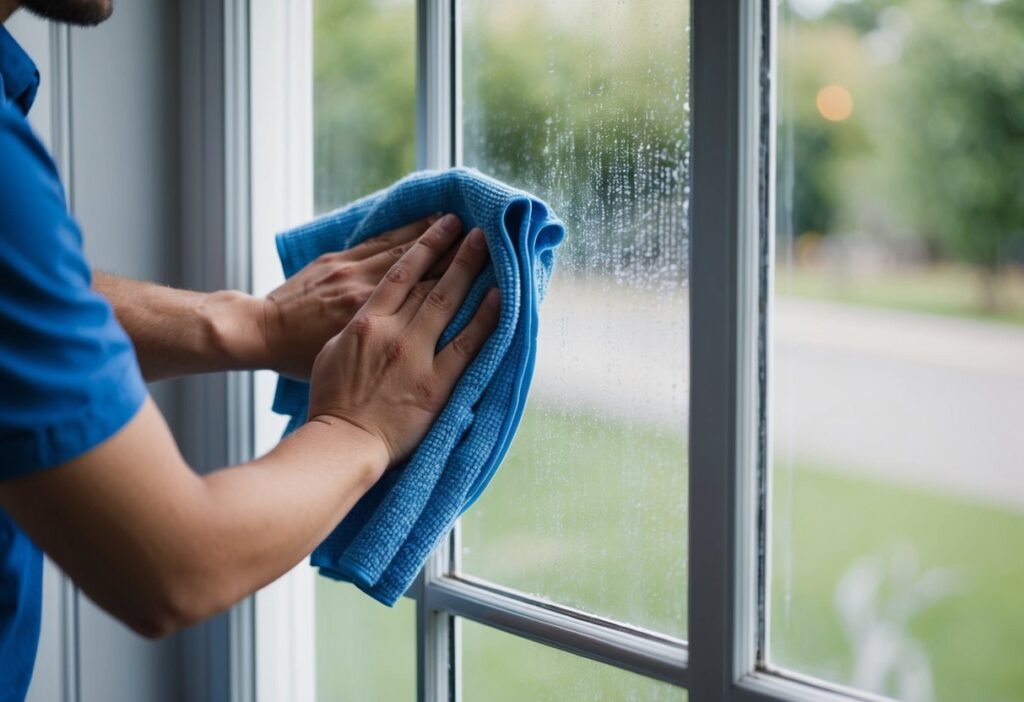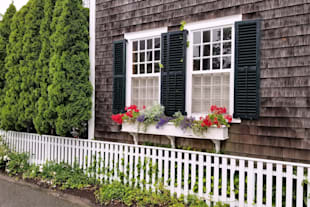Sash windows add charm and character to homes, but they can quickly accumulate dirt and grime. Regular cleaning is essential to maintain their appearance and functionality. With the right approach, cleaning sash windows can be a straightforward task that yields sparkling results.
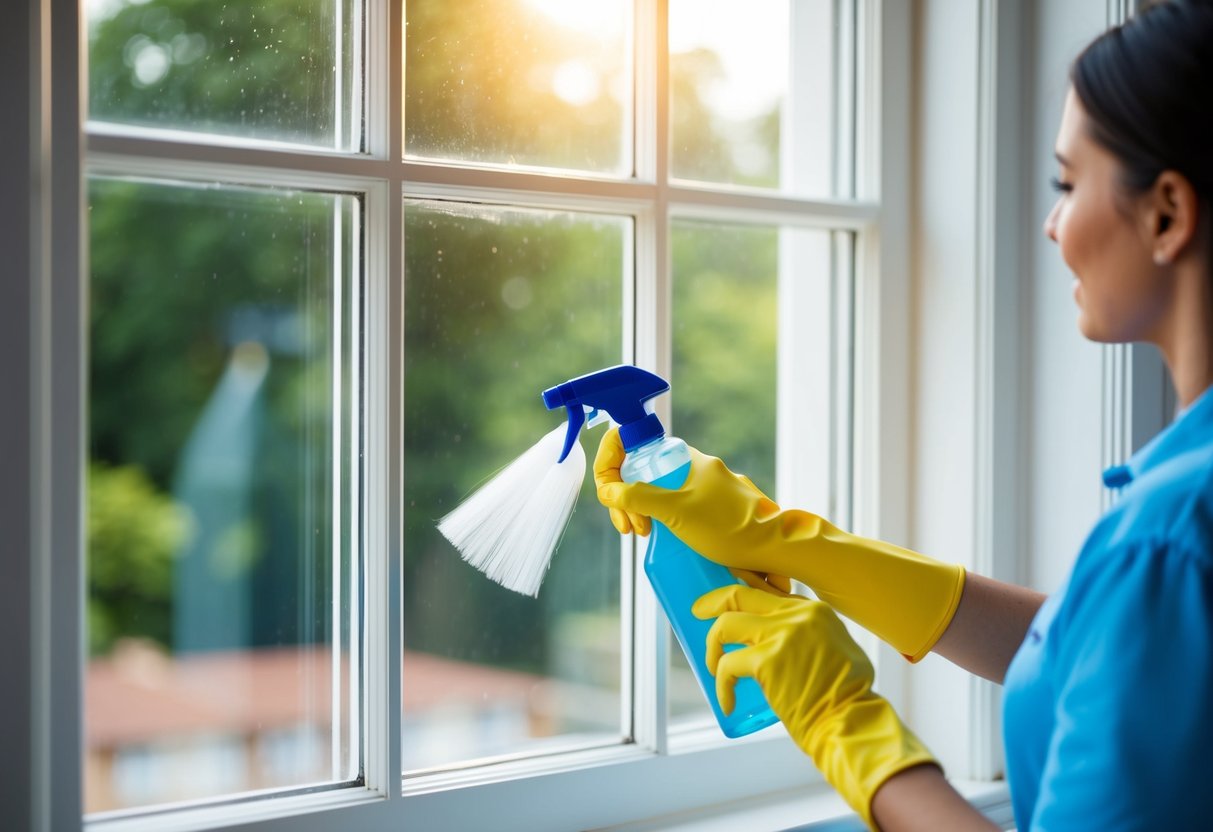
How to clean sash windows effectively – start by removing loose dirt with a brush or vacuum, then use a mild detergent solution and a microfibre cloth to wipe down the glass and frames. For best results, clean on a cloudy day to avoid streaks caused by rapid drying in direct sunlight. Don’t forget to clean the window tracks and lubricate any moving parts to ensure smooth operation.
Safety is paramount when cleaning sash windows, especially on upper floors. Always use sturdy ladders and consider enlisting help for hard-to-reach areas. By following proper techniques and taking necessary precautions, homeowners can keep their sash windows in top condition, enhancing both the aesthetics and value of their property.
Preparing to Clean Sash Windows
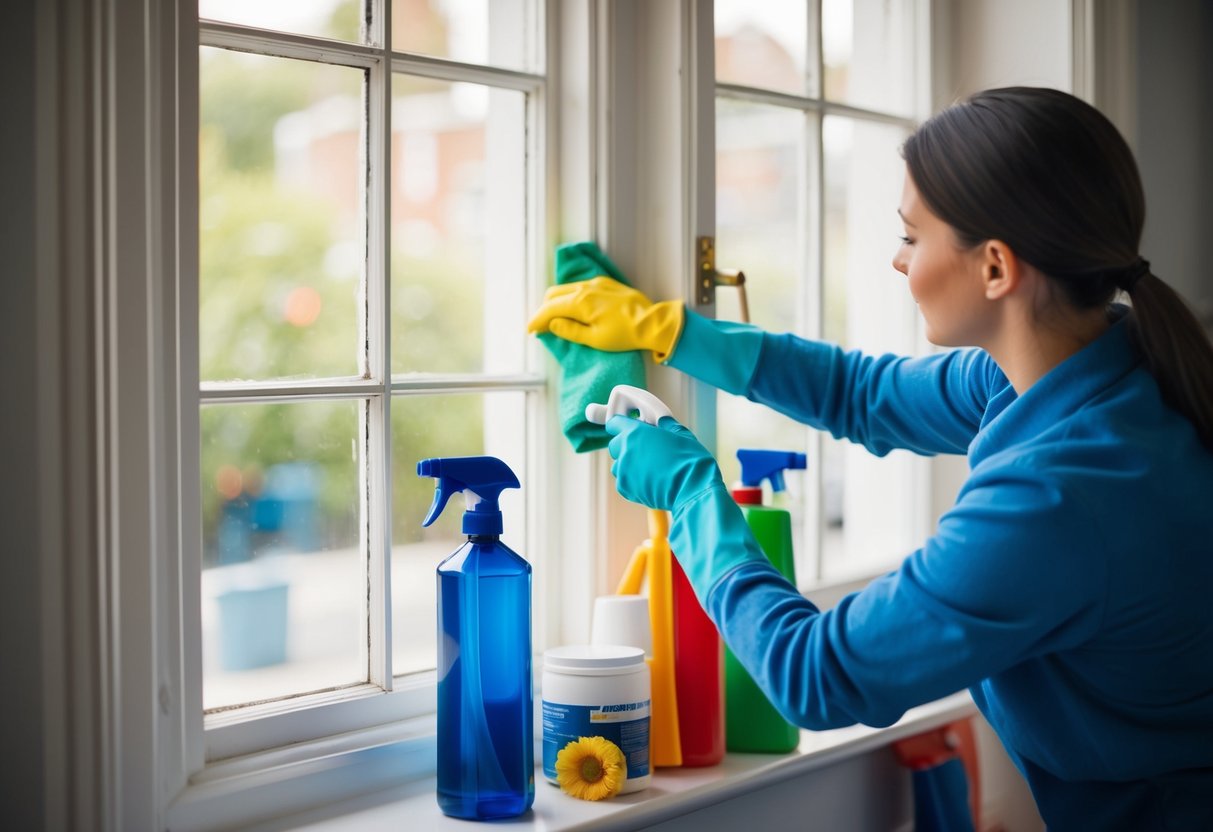
Before starting the cleaning process, it’s essential to prepare properly. This involves prioritising safety and gathering the right tools for the job.
Safety First
Cleaning sash windows can be risky, especially for high windows. Always use a sturdy ladder and have someone nearby to hold it steady. Wear non-slip shoes and avoid leaning out too far. For very tall windows, consider hiring professionals.
When working with cleaning solutions, wear rubber gloves to protect your skin. Open windows for ventilation to avoid breathing in fumes. If using strong cleaners, wear safety goggles to shield your eyes from splashes.
Take care when lifting heavy sashes. Some older windows may be stuck or difficult to move. Don’t force them open, as this could cause damage or injury.
Gathering Necessary Equipment
The right tools make window cleaning easier and more effective. Start with a vacuum or soft brush to remove loose dirt and cobwebs. For the glass, you’ll need a good quality glass cleaner and lint-free cloths or newspaper.
A bucket of warm, soapy water is perfect for cleaning frames and sills. Choose a mild detergent that won’t harm the window materials. Microfibre cloths are excellent for both washing and drying, as they don’t leave streaks or lint behind.
For hard-to-reach areas, a long-handled squeegee can be useful. Don’t forget old towels to catch drips and spills. If your sash windows have intricate details, a soft toothbrush can help clean tight spots.
Cleaning Techniques for Sash Windows
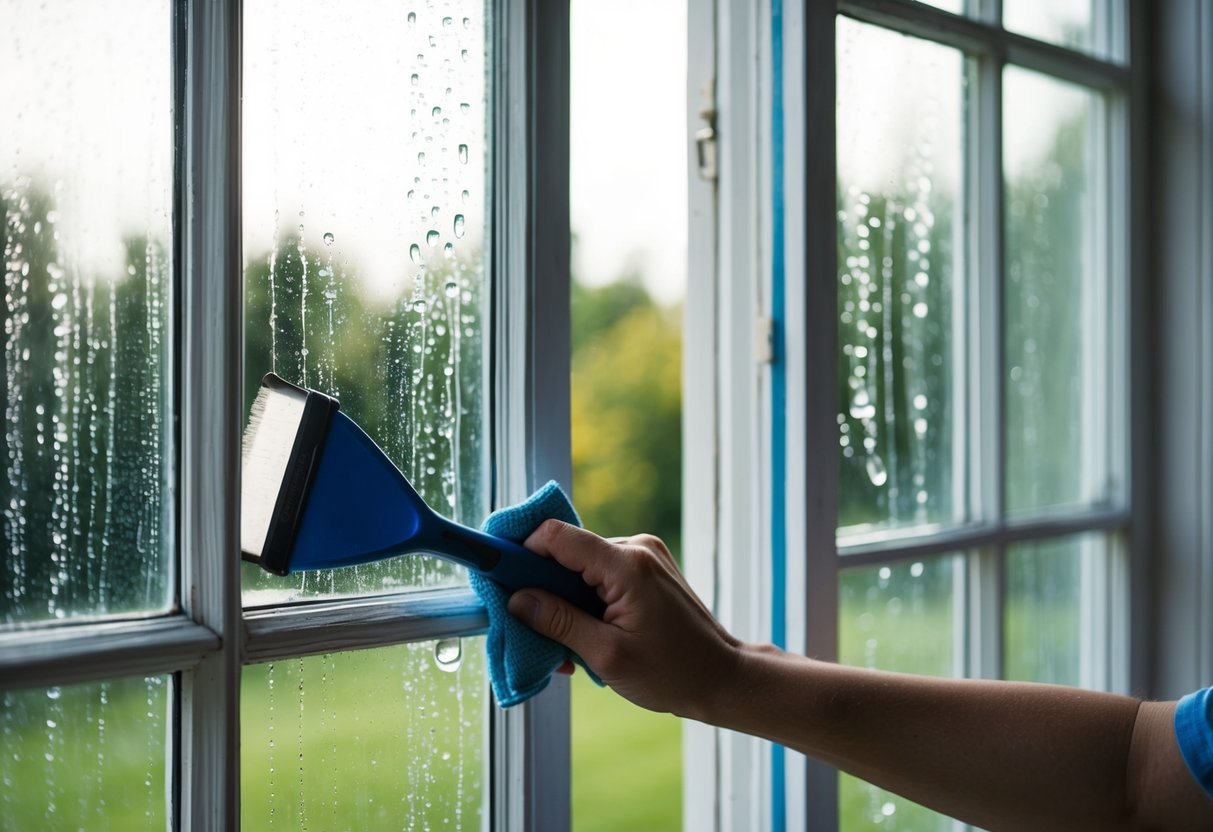
Proper cleaning methods are key to maintaining sash windows. These techniques help keep glass sparkling and frames in top condition.
Dealing with Glass Surfaces
Start by dusting the glass with a soft brush or vacuum. Mix warm water with a small amount of mild detergent for a gentle cleaning solution. Use a microfibre cloth to apply the soapy water to the glass.
For stubborn marks, a specialist glass cleaner may be needed. Spray it onto the cloth rather than directly on the glass to avoid drips.
Wipe the glass in circular motions, then use a squeegee to remove excess water. Start at the top and work downwards in a smooth, continuous motion.
Finish by drying the edges with a lint-free cloth or paper towels to prevent water streaks.
Frame Maintenance
Clean frames with a damp cloth and mild soapy water. For uPVC sash windows, use a non-abrasive cleaner to avoid scratching.
Pay special attention to the tracks and grooves where dirt can build up. A small brush can help dislodge debris.
Timber sash windows need extra care. Clean with a mild wood soap and dry thoroughly to prevent water damage.
After cleaning, apply a thin layer of wood polish or oil to nourish the timber and protect it from moisture.
Addressing Common Problems
Water spots can be removed with a mixture of white vinegar and water. Apply with a soft cloth and buff dry.
For paint splatters, use a plastic scraper to gently lift the paint. Be careful not to scratch the glass.
Mould and mildew often form in damp corners. Clean with a solution of one part bleach to three parts water. Wear gloves and ensure good ventilation.
Sticky or stiff sashes can be eased by cleaning the tracks and applying a silicone spray lubricant.
For hard water stains, try a paste of baking soda and water. Gently rub onto the glass, then rinse and dry.
Advanced Cleaning and Minor Repairs
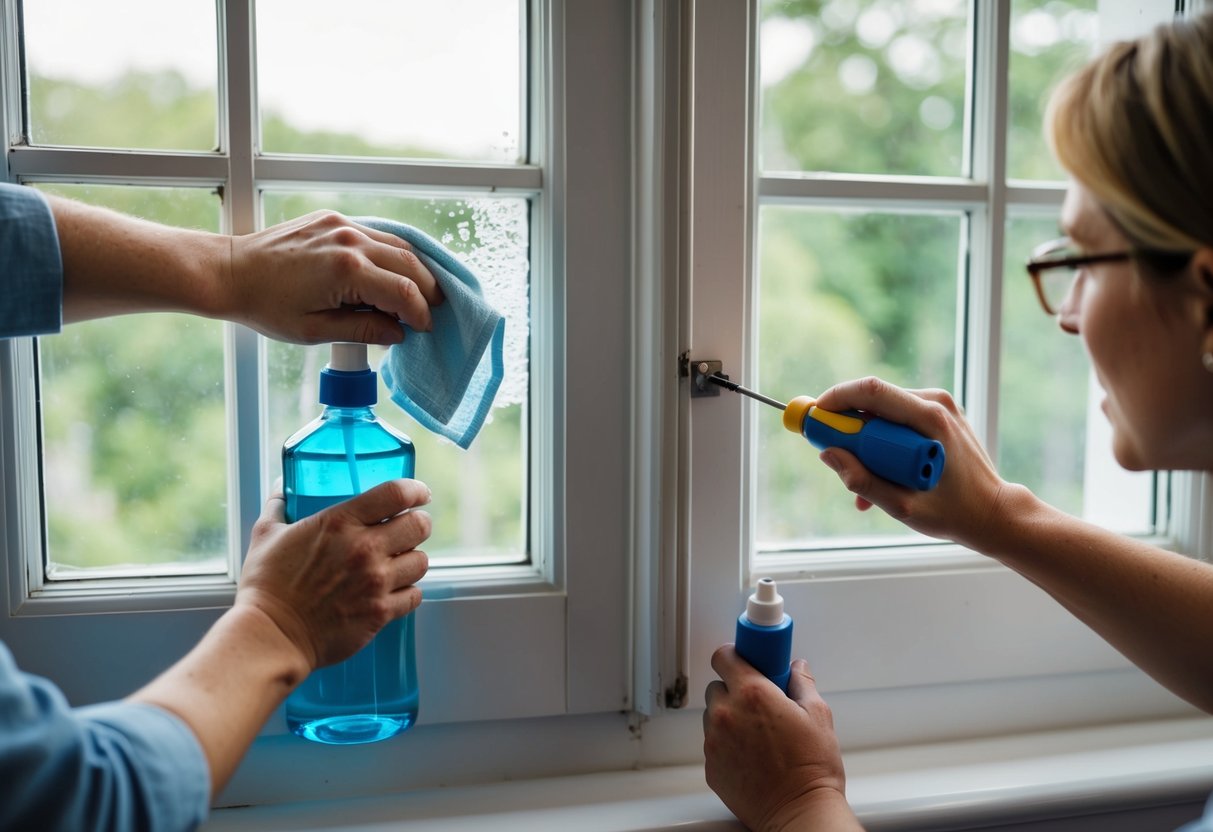
Proper maintenance of sash windows involves more than just routine cleaning. Addressing minor issues promptly can prevent bigger problems and extend the lifespan of your windows.
Repairing Timber and UPVC Frames
For timber frames, watch out for signs of rot. Sand down affected areas and fill small holes with wood filler. Apply a fresh coat of paint to protect the wood.
UPVC frames rarely rot but can become discoloured. Clean with a specialised UPVC cleaner to restore their appearance. Check for cracks or chips and use a UPVC repair kit for minor damage.
Inspect window cords on double-hung sash windows. Replace fraying cords to ensure smooth operation. Lubricate moving parts with silicone spray to prevent sticking.
Ensuring Longevity and Functionality
Regular checks help maintain window function. Look for gaps that allow draughts. Apply weatherstripping or caulk to seal any openings.
Clean and oil window gear to prevent rust. This keeps windows opening and closing smoothly.
Check glazing putty around glass panes. Reapply if cracked or missing to prevent water ingress.
Treat timber surfaces annually with wood preservative. This guards against moisture damage and extends the window’s life.
Consider professional help for complex issues like extensive rot or major draught problems. Experts can often restore old sash windows, saving you money on replacements.
Post-Cleaning Care and Maintenance
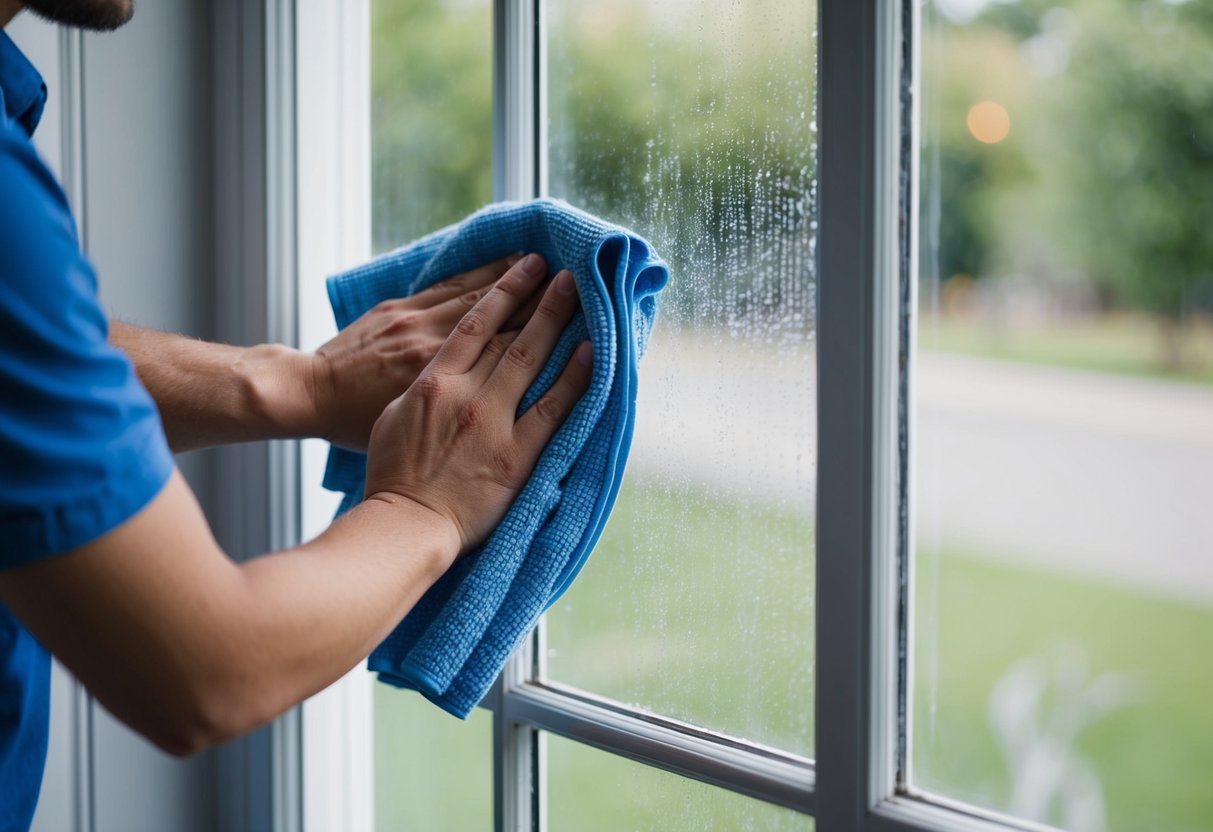
After cleaning sash windows, proper care helps them stay pristine longer. Regular cleaning is key to maintaining their appearance and function.
For quick touch-ups between deep cleans, use a microfibre cloth or chamois. These tools remove dust and light dirt without scratching the glass.
To clean smudges, mix a small amount of mild detergent with water. Apply this solution with a soft cloth, then dry thoroughly to prevent streaks.
Traditional sliding sash windows benefit from lubricating moving parts. A silicone-based spray on tracks and pulleys keeps them operating smoothly.
Check weatherstripping and seals regularly. Replace worn items to maintain energy efficiency and prevent drafts.
Inspect the outer glass for chips or cracks during cleaning. Address any damage promptly to avoid further issues.
Avoid using newspaper for drying, as it can leave ink residue. Instead, opt for lint-free cloths or squeegees for a streak-free finish.
In humid areas, wipe down window frames after cleaning to prevent mould growth. This simple step protects both the windows and your health.
By following these care tips, sash windows will remain functional and attractive for years to come.
Best Practices and Avoiding Damage
Proper cleaning techniques and safety measures are crucial for maintaining sash windows. Gentle methods and the right tools help preserve the windows’ condition and function.
Cleaning Without Harm
Use a mild cleaning solution made of warm water and a small amount of washing-up liquid or white vinegar. Avoid harsh chemicals or abrasive materials that could scratch the glass or damage wooden frames. Apply the solution with a soft cloth or sponge, and wipe gently in circular motions.
For stubborn dirt, use a non-abrasive scrubber. Rinse thoroughly with clean water to remove any soap residue. Dry the windows with a lint-free cloth or squeegee to prevent streaks.
Clean on a cloudy day to avoid rapid drying, which can leave marks. Pay attention to the window tracks and cords, wiping them carefully to remove built-up grime.
Seeking Professional Assistance
It’s all very well knowing how to clean sash windows but if they are very old or in poor condition, it may be wise to hire a professional window cleaner. They have specialised tools and knowledge to clean delicate parts without causing damage.
Professionals can also spot potential issues like rotting wood or faulty mechanisms. They can apply the right lubricants to keep the windows sliding smoothly.
For listed buildings or windows with ornate details, expert care is especially important. Professionals can clean hard-to-reach areas safely and efficiently.
Consider twice-yearly professional cleaning to maintain your sash windows’ appearance and function.
